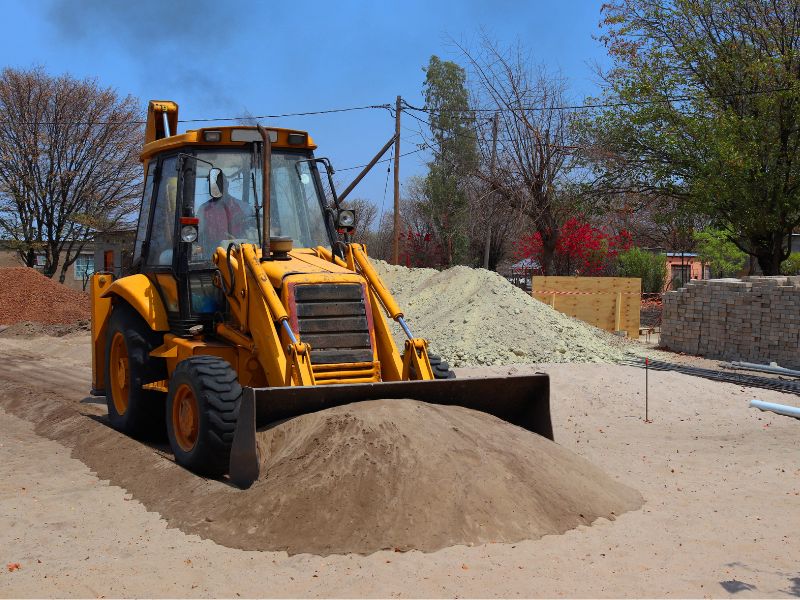Driving an excavator is a crucial skill in the construction industry. Whether you’re a seasoned operator or a novice looking to enter the field, understanding the key aspects of excavator driving is essential for a successful and safe operation. In this guide, we will explore the fundamental knowledge and techniques required to operate an excavator effectively. From equipment familiarization to safety precautions, we’ll cover everything you need to know to excel in the construction industry.
Equipment familiarization
One of the first steps in becoming a proficient excavator operator is gaining a thorough understanding of the equipment itself. Familiarize yourself with the excavator’s various components and controls, such as the boom, bucket, arm, cab, and tracks. Learn the functions and capabilities of each part, enabling you to utilize them effectively during different tasks.
Moreover, it’s essential to know the technical specifications of the excavator, including its weight, engine power, and digging depth. Understanding these specifications will help you determine the excavator’s limitations and optimize its performance based on the job requirements.
Safety precautions
Safety should always be the top priority when operating heavy machinery like excavators. Here are some crucial safety precautions to follow:
Conduct Pre-Operational Checks:
Before starting any work, thoroughly inspect the excavator for any signs of damage or malfunction. Check the hydraulic systems, brakes, tracks, and other components. Verify that all safety features, such as seat belts and emergency shut-off switches, are in proper working condition.
Wear personal protective equipment (PPE):
Always wear the appropriate PPE, including a hard hat, safety glasses, high-visibility vest, steel-toed boots, and ear protection. These items protect you from potential hazards such as falling debris, loud noises, and exposure to harmful substances.
Establish work zone safety:
Define a clearly marked work zone to prevent unauthorized personnel from entering hazardous areas. Use barriers, signage, and warning lights to indicate the excavator’s operating radius and ensure that everyone on the site is aware of the ongoing work.
Understand utility location:
Before digging or excavating, ensure that you have accurate information about the location of underground utilities. Contact utility companies to identify any buried cables, gas lines, or other services that may pose a risk. This knowledge will help prevent accidents and service disruptions.
Maintain stability:
Maintaining the excavator’s stability is vital during operation. Avoid overloading the bucket or lifting materials beyond the machine’s capacity. Be cautious when working on uneven or sloping surfaces, as it can affect the balance of the excavator. Use outriggers or stabilizers, if available, to enhance stability.
Follow safe operating procedures:
Adhere to the manufacturer’s recommended operating procedures and guidelines. Control the speed and movement of the excavator smoothly to minimize the risk of tipping or losing control. Avoid sudden or jerky movements that may destabilize the machine.
Efficient operation techniques
To enhance your excavator driving skills and improve productivity on the construction site, consider the following techniques:
Smooth and precise movements: Practice smooth and precise movements of the excavator controls. Gradually increase or decrease speed and avoid abrupt changes in direction or operation. This technique helps maintain control and reduces the risk of accidents.
Proper bucket positioning: Learn to position the bucket correctly for various tasks. Tilting the bucket at the appropriate angle can significantly impact efficiency. Practice using the bucket to scoop, load, and dump materials accurately. Utilize the bucket’s teeth or cutting edge to penetrate the ground effectively.
Understanding digging techniques: Different digging techniques are employed based on the nature of the soil or material being excavated. Learn techniques such as trenching, benching, and sloping to optimize digging efficiency and maintain stability. Understanding the properties of the soil and adjusting the digging technique accordingly is crucial.
Material handling: Efficiently handling materials is vital in construction projects. Practice picking up, moving, and placing materials with precision. Utilize the excavator’s arm and boom to reach desired areas, always considering the load capacity and stability of the machine.
Work with ground conditions: Adapt your driving technique to suit the ground conditions. Soft or muddy terrain requires cautious operation to prevent getting stuck or causing damage. Adjust the excavator’s track width or use appropriate attachments like tracks with cleats for improved traction.
Mastering excavator driving in the construction industry demands a combination of knowledge, skill, and safety-consciousness. By familiarizing yourself with the equipment, following safety precautions, and adopting efficient operation techniques, you can become a proficient excavator operator. Remember, continuous practice and staying up-to-date with industry standards and regulations are key to ensuring safe and successful excavator operations on construction sites.







